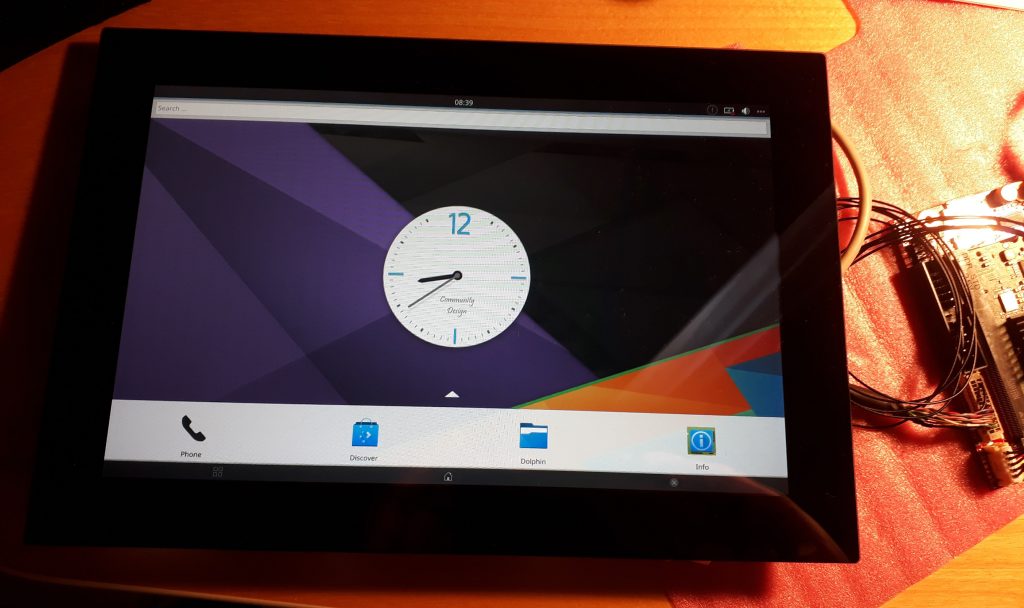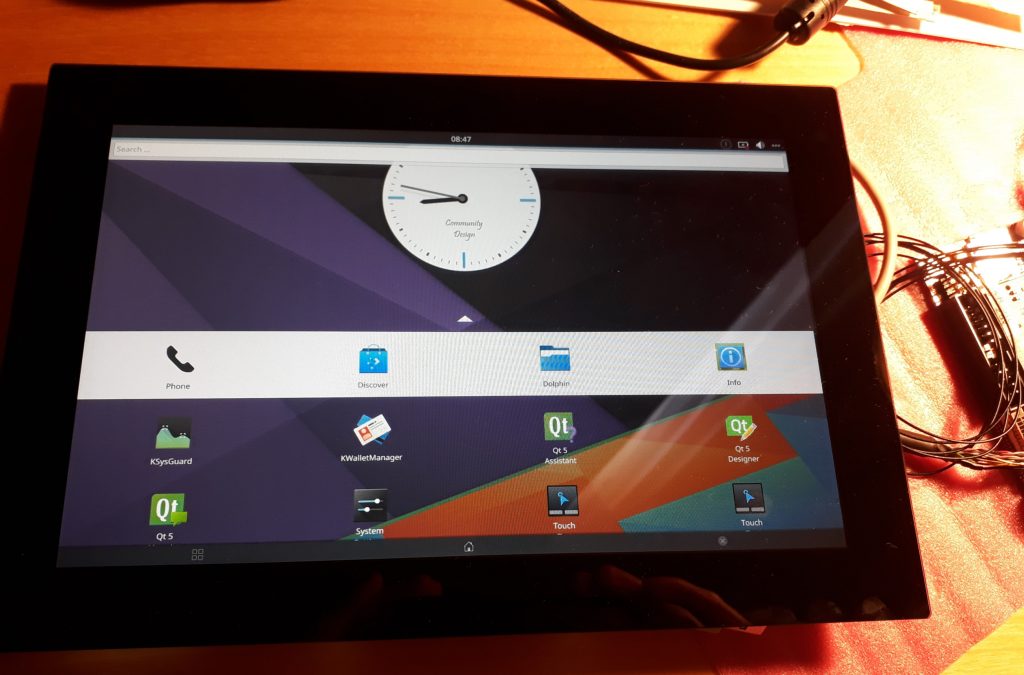Running Plasma Mobile on an i.MX 6 test board
Matthias Klumpp
Latest posts by Matthias Klumpp (see all)
- Running Plasma Mobile on an i.MX 6 test board - November 2, 2017
On the road to a working mobile phone, doing some initial evaluation and testing of the current state of existing user interfaces and frameworks is key, to evaluate what can readily serve as building blocks and what needs work. Last weekend I did an initial experiment in getting Plasma Mobile working on our i.MX 6 based test development board, using a 4.13.5 Linux kernel and stock Debian Testing. Initially, I encountered a few problems with KWin not wanting to start a Wayland compositor due to not recognizing the device as OpenGL ES 2.0 capable and also not finding a few needed OpenGL extensions. After some digging and with help from Plasma Mobile developer Bhushan Shah we tracked this issue down to a bug in libepoxy that was solved a long time ago. Unfortunately, Debian’s packaged version of this library was very old, so I upgraded it to a newer version manually (and we will get it updated in Debian soon). This resulted in a working Plasma Shell on the device.
The next step was compiling and installing the Plasma Mobile components from current Git master repository and running the mobile shell. This initially led to graphical glitches in the display, which were caused by KWin running as root (which you should never do as a user, but I did not think this would also cause major issues just for testing whether the shell works or not). After switching to a regular user for running the KWin wayland compositor and removing a dead call to upstart from the plasma-phone launch script, I could start the Plasma Mobile/Phone shell with the kwin_wayland --drm --xwayland plasma-phone command.
Here are the screenshots you have probably been waiting for the whole time:



Of course this is not a final product, by any stretch of the imagination. It’s simply a test to see that it runs. There is a lot to do in terms of performance improvements, as Plasma Mobile still runs pretty slow on this kind of hardware (which could be less of a problem in case we use the i.MX 8 platform). Also, these initial tests were done using recent—but not the most up to date—versions of Plasma, KDE Framework and Qt (KWin/Plasma 5.10.5, KF 5.37.0, Qt 5.9.1), while a lot of performance improvements and bug fixes went into the latest versions. So it is definitely worth switching as soon as possible to tracking KDE’s latest development releases to benefit early from improvements done in the whole stack.
In general, Plasma Mobile already provides a usable (albeit alpha-quality) mobile interface today. The Qt Quick/QML based Kirigami component library and interface guidelines also provide a nice framework for mobile application developers, that have been tested on Android as well, and works nicely on and with the Plasma Mobile shell.
We are looking forward to seeing what we can do with the Plasma Mobile shell in future. Many thanks to Bhushan and the KDE community for helping with some issues encountered when making Plasma work on the i.MX 6, and their plans on making a real Plasma Mobile alpha release soon. If you are interested in the Plasma Mobile roadmap, this recent post from Sebastian Kügler might be interesting for you.
Recent Posts
Related Content
- Landfall: A Case Study in Commercial Spyware
- Purism Approach vs. Google Model
- Spotify “Panama” Leak Is a Wake-Up Call for Digital Privacy
- Google Mishandling School Children’s Data
- Invisible Dependencies, Visible Damage: The Case for Supply Chain Hygiene


